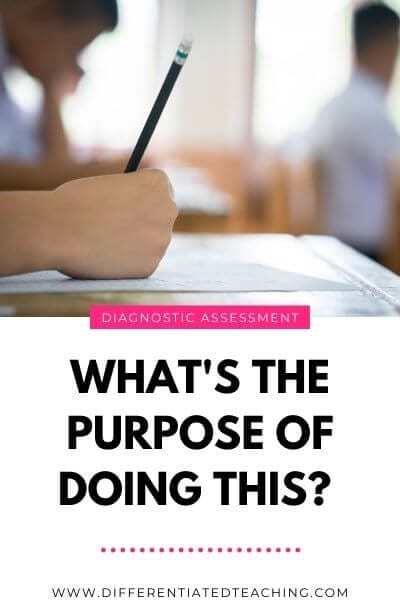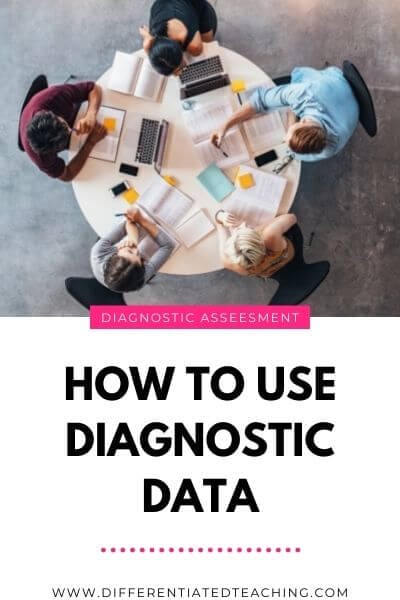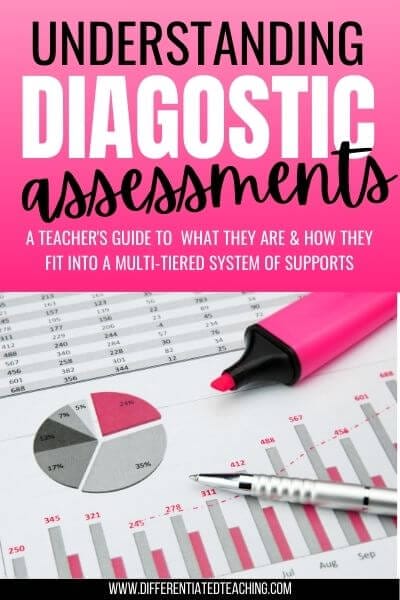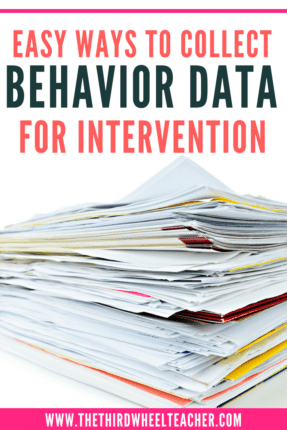Understanding diagnostic assessment for struggling learners
As a classroom teacher, you know how important it is to measure your students’ progress. But the act of administering an assessment can feel like a bureaucratic exercise, a duty to fulfill, rather than a way to figure out the next steps in instruction.
And let’s be honest… District-mandated diagnostic assessments are usually hugely expensive assessments with 3-letter nicknames from the publishing companies that are only backed up by their own research. Add in the days it takes from actual instruction, and it can feel like a hugely frustrating waste of time.
Despite all of this, there are benefits to a well-planned, purposefully selected diagnostic tool.
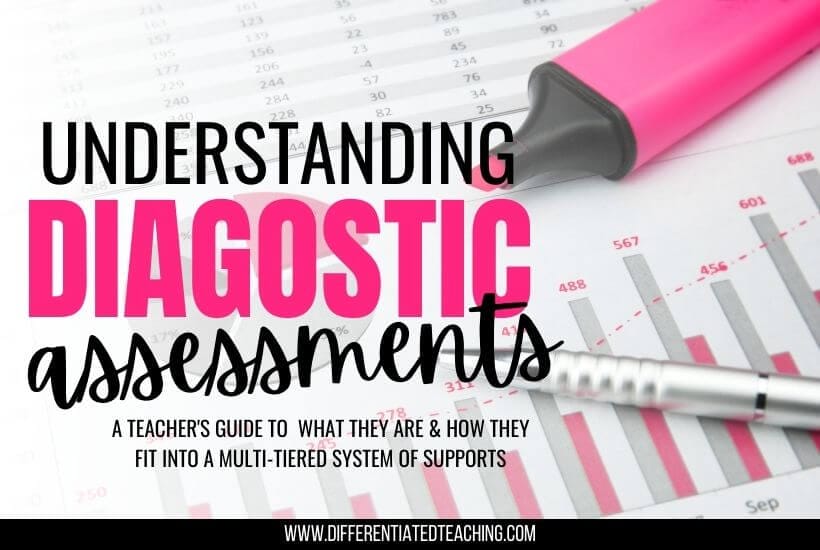
Today I want to share a little more information about how to use these in conjunction with universal screening to help you identify gaps and pinpoint how best to support a struggling learner in your classroom.
Before we dive in too deep. Let’s make sure we’re all on the same page with the basics first.
What is diagnostic assessment?
A diagnostic assessment is a type of formative assessment designed to gather information about how a learner is currently performing in a particular subject or skill. It is a criterion-referenced assessment, meaning learning is measured using a specified set of indicators. The student’s performance is not compared to peers, unlik
While the term diagnostic covers a broad range of assessments, including unit pre-tests, in this case, we’ll be referring to the assessments used within the RTI process to identify knowledge and skill gaps.
These formative assessments are designed to gather additional data when red flags occur based on in-class performance with struggling learners or during a review of universal screening data.
Unlike universal screeners, diagnostic assessments aim to take a more complete look at where students are currently performing within a subject area. This means they are typically longer and target a deeper set of skills than those seen in universal screening. They also often require one-on-one administration.
The goal is to find the strengths and gaps in the student’s knowledge and skills. This helps target interventions to accelerate student progress. When available, diagnostic assessment data should always be taken from reliable and valid measures. You should examine these in conjunction with other data sources (such as classroom work or teacher observational data).
What is the role of diagnostic assessments?
A diagnostic assessment is like a health checkup.
It’s a relatively short evaluation that can help identify strengths and weaknesses to figure out what’s going on. It sounds like such an obvious thing. However, it might surprise you just how rarely it actually happens as part of the RTI process.
A quality diagnostic assessment doesn’t take long. Typically, it is around an hour – and it can be tailored to the individual student or even grade level. You will administer in either a paper-and-pencil or electronic format. They are a logical follow-up when there are concerns about a student and more information is needed.
Like any formative assessment, the goal is to use the data to create a plan of action. This allows the teacher to move forward with effective instruction and identify where to monitor student progress.
Do all students need diagnostic assessments?
In terms of the diagnostics we are discussing here, the short answer is no.
The entire school should not complete diagnostic testing three times a year. This is an incredible waste of weeks of academic learning time and resources and has little impact on actual student learning.
Unfortunately, old habits are hard to break. Some districts still require the BAS or DRA to be administered this way as a result. This ends up as a very time-intensive duplication to the universal screener.
If you have concerns, a more complete diagnostic assessment plan is warranted. That may include when a student is:
- flagged by the universal screener data
- identified by the teacher due to academic or behavioral concerns
- has repeated failures on campus or district benchmark assessments
- displays inconsistent performance & more information is needed
You use diagnostic assessment to identify gaps and target your interventions
When it comes to pre-assessment before an upcoming topic or a formative assessment used in the classroom to inform your teaching approach, it can definitely be helpful for all students to participate in the diagnostic assessment process.
What are the types of diagnostic assessments given in reading?
A diagnostic for reading provides information about strengths, what strategies they use, and what areas they need help with. Many students who struggle have gaps in early literacy skills. The tests identify these, beginning with phonological awareness. This data can also be a reference point whenever there are questions about student progress.
Teachers use the diagnostic test in reading to estimate student reading levels. This can identify the next steps for reading development. It can also help when creating small groups for reading instruction.
It is essential to recognize that not all criterion-referenced assessments used for this purpose are high quality.
Many, including some commonly used by districts listed below, are very subjective. Factors, like teacher-student relationships, easily influence the outcomes. Despite this, many public schools rely on these as part of their state reporting requirements.
It’s also important to note that many diagnostic tools are comprehensive and cover all five components of reading. However, some focus on beginning literacy and leave comprehension out. Different tests also have additional training requirements for administrators. However, anyone can administer the free tools listed.
Commonly used paid comprehensive reading assessments:
- Gray Oral Reading Test (GORT)
- Woodcock Diagnostic Reading Battery
- Early Reading Diagnostic Assessment (ERDA)
- Developmental Reading Assessment 2 (DRA-2)
- Benchmark Assessment System (BAS)
Examples of free reading diagnostic assessments available online:
Suppose your school only has a limited number of diagnostic tools available. In that case, you can use options found online to begin gathering data on how best to target your intervention efforts for struggling learners.
I’ve included information on the types of assessments to help you find what you need quickly and easily.
- PAST Test – assesses phonological and phonemic awareness; aligned to the science of reading
- Phonological Awareness Assessment – looks at all areas of phonological awareness
- Phonics Inventory – assesses phonics knowledge using nonsense words
- QPS – covers phonics knowledge
- Primary Spelling inventory – looks at phonics & orthographic mapping
- Elementary Spelling Inventory – assesses phonics & orthographic mapping
- Signs for Sounds – includes phonics & orthographic mapping
- Abecedarian Reading Assessment – covers all basic reading skills
- TPRI – examines early reading skills
What types of diagnostic tools are used are for math?
When students struggle in mathematics, it can lead to math anxiety. It’s essential to find and target gaps early so you can get to the bottom of issues before they grow into more significant problems. However, unlike reading, math seems to be so much broader of a topic. Teachers often have more trouble targeting math interventions. Literacy gaps follow a clear progression. However, math is far less clear-cut.
Diagnostic assessments can help teachers take a data-driven approach to learn where student strengths and needs guide supports and intervention efforts. Math diagnostic testing can provide teachers with valuable insights into how students are currently thinking about math and the skills and strategies.
Unlike reading, most schools don’t have a school-wide measure they administer because there are fewer laws and regulations guiding math data than those covering literacy. Therefore, it can be much harder to find assessments floating around your campus. I always check with special education teachers on my campuses because they are most likely to have a closet of tools to help with targeting their support.
You’ll also notice there are far fewer web-based resources available as well. I’ve tried my best to curate a good list for you below. If you have recommendations for teachers, let me know in the comments! I’m always looking for good tools for teachers to use, and math is just a complex skill to assess.
Commonly used paid comprehensive literacy assessments:
- NWEA MAP Testing
- Scholastic Math Inventory
- STAR Math
Examples of Free Math Diagnostic Tools for Teachers & Interventions
- The Number Knowledge Test – numerical fluency focused
- Numeracy Consultants Assessment – free and has additional resources
- Middle School Skill Assessments – covers 6-9th grade math skills for planning effective instruction
- Math Assessment Supplement – to help collect data on kinds of errors and conduct error analysis
- Developmental Math Assessment – great for looking at error patterns and planning individualized instruction
How you can use your diagnostic assessment data to target interventions
As a general rule, interventions should be short and focused (Ollendick et al., 2007). That is, when you are planning interventions, you want to make sure these interventions are brief in duration as well as focused on only one skill or set of skills.
For example, a high error rate on a student’s screening data suggests a possible gap in decoding skills. If you follow up with a phonics inventory, you may find out that the student struggles to decode vowel pairs.
After setting a goal based on the diagnostic data you collected on vowel pairs, you’d begin a focused intervention. This intervention would only focus on teaching the student to identify and decode words with vowel pairs.
You’d continue to monitor progress across time. Graph the data for review to be sure the student was on track to meet the goal.
How do teachers use diagnostic assessment?
As you work through the diagnostic assessment process, remember that these are, first and foremost, formative assessments. Whether you’re an interventionist or a classroom teacher identifying how to best efficiently plan instruction for your small groups, it is crucial to recognize that the data is only valuable if you put it to use.
The first step is finding ways to streamline the assessment process to better use instructional time. However, we must also gather and utilize quality diagnostic data to better meet the needs of struggling and reluctant learners to help support success in school. Sometimes this may be through intensive intervention. I find the classroom is the best place for this support in other situations.
If you’re looking for evidence-based resources that won’t cost an arm and a leg, check out these blog posts:


